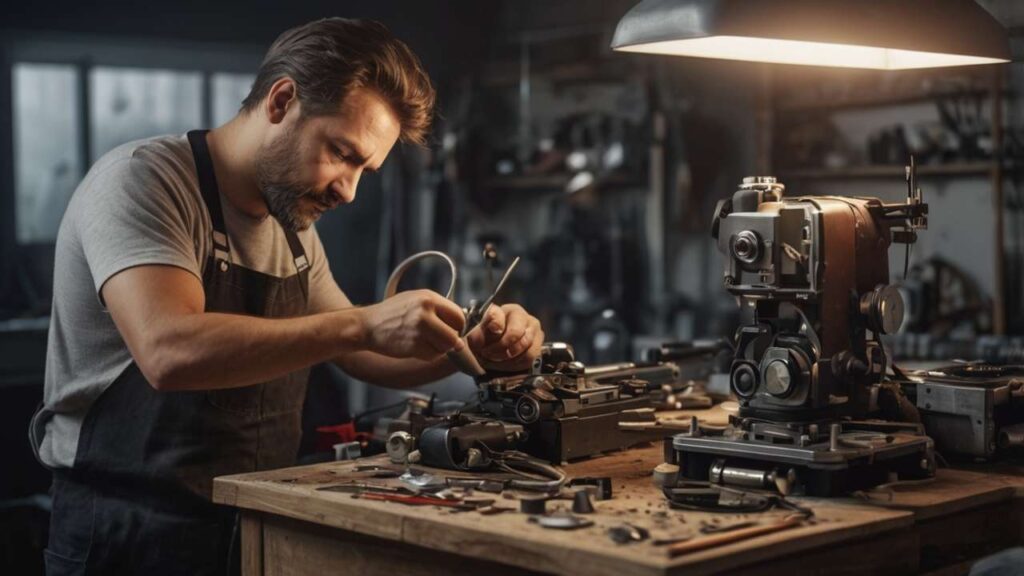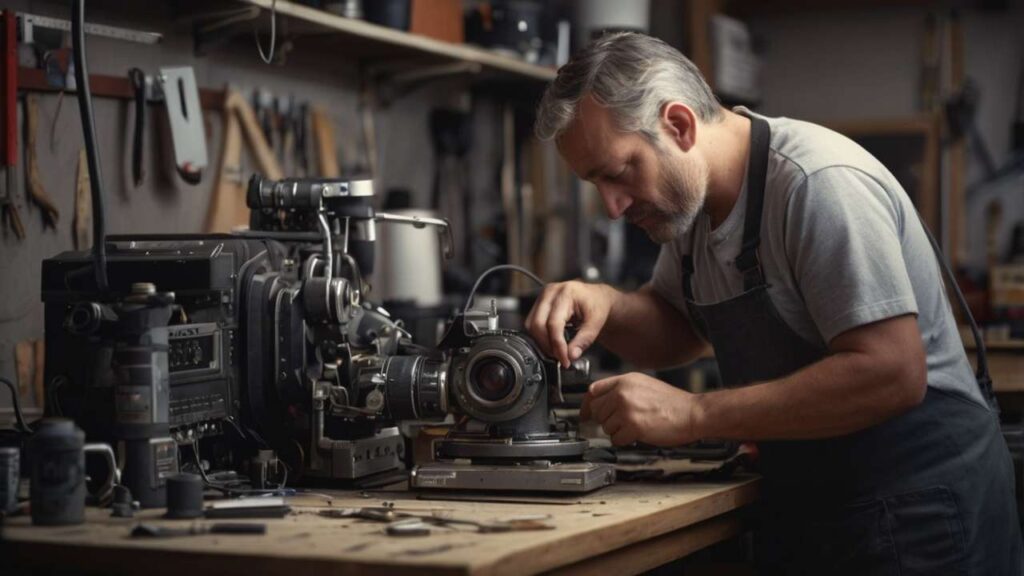Every photographer, whether professional or hobbyist, eventually realizes that their gear isn’t just a tool – it’s an investment. Yet, so many cameras end up on repair benches with problems that could have been avoided. Dust sneaks inside without permission, moisture becomes the silent killer, and tiny particles of fungus grow like they own the place. It sounds dramatic, but it’s true: preventive camera maintenance is often ignored until it’s too late. And sadly, repairs usually cost more than what regular care would have ever demanded.
Photography experts say moisture is one of the worst enemies because it doesn’t shout or show immediate symptoms—it slowly eats away at the electronics. As one repair specialist once told me, “By the time you notice the corrosion, it’s already too late.” That statement stuck with me. It felt like a warning not just for cameras, but for life in general.
This article isn’t about scaring you. It’s about giving you practical, trusted, and reliable knowledge to protect your photography gear. It’s a continuation of the broader conversation that’s been explored in guides like DIY vs Professional Camera Repair: The Risky Truth About Fixing Your Own Gear and deep dives such as Understanding Common Camera Malfunctions: A Guide to the Problems Professionals See Every Day. What we’re focusing on here is simple: how regular camera maintenance can save you money, extend your gear’s life, and help you enjoy photography without the constant anxiety of breakdowns.
The Enemies of Your Gear
Think of your camera like your lungs: they work best in clean, dry air. The “enemies” are pretty obvious but easy to underestimate.
- Dust: It creeps into the sensor, causing those annoying dark spots that appear in photos, especially on clear skies. Even with the best cleaning kits, if you let it pile up, it becomes stubborn.
- Moisture: I’ve seen it in my own bag during a mountain hike—fog builds up in the lens, and if not dried properly, it creates the perfect nest for fungus. Moisture doesn’t just damage glass; it rusts delicate circuits.
- Fungus: Small white or spider-web-like patterns that literally grow inside your lens elements. Once fungus settles, it’s not just cleaning—it sometimes requires replacement.
- Extreme Temperatures: Leaving a camera in a hot car or freezing tent is like asking for trouble. Lubricants thicken, plastics crack, and sensors become less responsive.
Specialists at top-quality camera repair and services in North Carolina confirm that these enemies are the top reasons cameras get brought in for repair. Not because the equipment is poorly made, but because owners forget the little preventive steps that could have stopped the problem before it started.
A Simple Maintenance Checklist
Honestly, maintenance doesn’t have to feel like rocket science. It’s more like brushing your teeth—boring maybe, but better than dealing with cavities later. Here’s a trusted checklist that works:
- Lens Cleaning – Use a blower first, not a cloth. Wiping dust directly can scratch coatings.
- Sensor Care – Unless you’re experienced, leave deep sensor cleaning to professionals. But you can safely use a blower to keep loose particles away.
- Proper Storage – Store in a dry cabinet or with silica gel. Avoid tossing your camera bag in damp basements.
- Check Seals and Caps – Make sure body caps, rear lens caps, and gaskets are in place. Missing seals are an open door for dust and moisture.
- Battery and Contacts – Remove batteries if not using for weeks. Clean contacts with a microfiber cloth.
- Handling Basics – Always use straps when outdoors. Accidents are the fastest path to cracked housings and repair bills.
Some photographers make this a monthly ritual, others every couple of shoots. The key is consistency, not perfection.
The “Annual Check-Up” Concept
I used to think sending my camera for yearly servicing was overkill. Until one day, during a wedding shoot, my shutter mechanism jammed mid-ceremony. The repair tech later explained that tiny springs had worn unevenly—a problem a routine check-up could have spotted months before. Since then, I treat my camera like my car: oil change for the car, calibration for the camera.
Professional servicing typically includes:
- Sensor deep cleaning
- Autofocus calibration
- Shutter and mirror inspection
- Firmware updates
- General body cleaning and lubrication
Just like a medical check-up doesn’t mean you’re sick, a camera check-up doesn’t mean your gear is broken. It’s simply trusted prevention. As highlighted in Behind the Lens: A Look at the Camera Repair Process from Start to Finish, the inspection process alone often reveals early-stage issues invisible to users.
The Benefits of a Well-Maintained Camera
The most obvious benefit is better image quality—no smudges, no stubborn spots on photos. But the deeper benefits are more valuable:
- Consistent Performance: Your autofocus locks faster, your shutter feels smooth, and you don’t deal with random errors mid-shoot.
- Extended Gear Life: A DSLR or mirrorless body can last 8–10 years with care, but only half that without.
- Higher Resale Value: Try selling a fungus-infected lens on a marketplace. You’ll either get peanuts or none at all. Buyers always ask about condition first.
A friend who runs a small studio in Charlotte told me that maintaining gear doubled the lifespan of his main DSLR. “I don’t look at maintenance as a cost,” he said. “It’s like buying extra years of work from the same camera.”
Blending with Future Perspectives
While this article focuses on prevention, it opens the door to other meaningful conversations for the photography community. For instance, Finding the Right Fit: What to Look for in a Camera Repair Service in North Carolina reminds us that even preventive care sometimes leads to professional help. Knowing how to choose a reliable service is part of the bigger picture.
There’s also space to expand into future discussions:
- Exploring how AI-based tools in repair diagnostics could detect issues faster than human eyes.
- A deep dive into the role of spare parts quality—cheap replacements versus original manufacturer parts, and how they affect long-term performance.
- Behind-the-scenes looks at repair workshops, tools they rely on, and what really happens to your gear once you hand it over.
- Even exploring the psychological impact of broken gear—because any photographer knows that when your camera fails, it’s not just a tool that’s down, it’s your creative flow.
All of these tie back into the bigger ecosystem of maintenance and repair, much like the articles already available in the camera repair category of Pro Service Tips.
Real-Life Case Study
One of the best examples of preventive care paying off came from a wedding photographer I know in Raleigh. He schedules servicing every January, right before wedding season begins. During one of those check-ups, a minor moisture spot was found near the sensor assembly. If left alone, it would have grown into full-blown corrosion. The cost of fixing it at that stage? Less than $100. If discovered six months later, it might have required a sensor replacement costing over $1,000. That’s the power of proactive maintenance.
FAQs
1. How often should I clean my camera lens and sensor?
Lenses should be cleaned lightly after every shoot if exposed to dust or fingerprints. Sensor cleaning depends on use, but a professional cleaning once a year is recommended.
2. Can moisture damage really be prevented with silica gel?
Yes, silica gel absorbs humidity, but it’s not foolproof. For serious photographers, a dry cabinet is the most reliable option.
3. Is professional servicing really necessary if my camera seems fine?
Yes, because not all issues show symptoms early. Just like car maintenance, professional servicing prevents hidden problems from turning into expensive repairs.
Regular camera maintenance isn’t glamorous. It doesn’t feel creative like editing or satisfying like buying new gear. But it’s the quiet discipline that keeps your gear alive. It’s the difference between a tool that works when you need it and one that fails when it matters most.
If you found this guide helpful, share it with other photographers using the buttons below. You never know, one simple reminder about maintenance could save someone else from losing their best camera at the worst possible moment.
For more resources, tips, and trusted advice, explore Pro Service Tips today.


